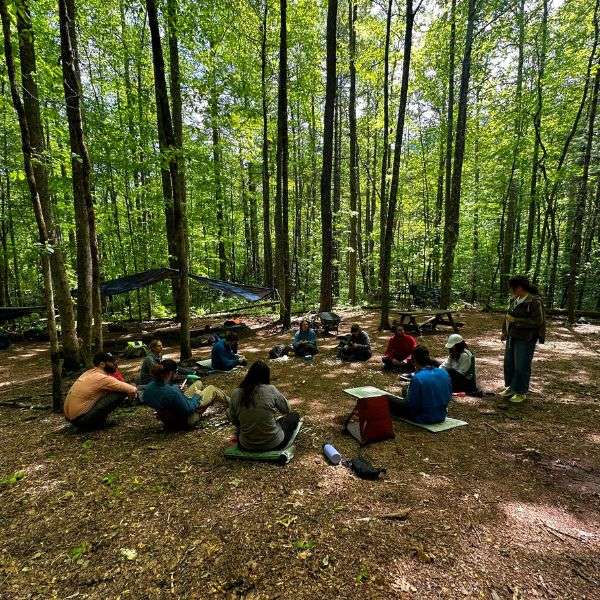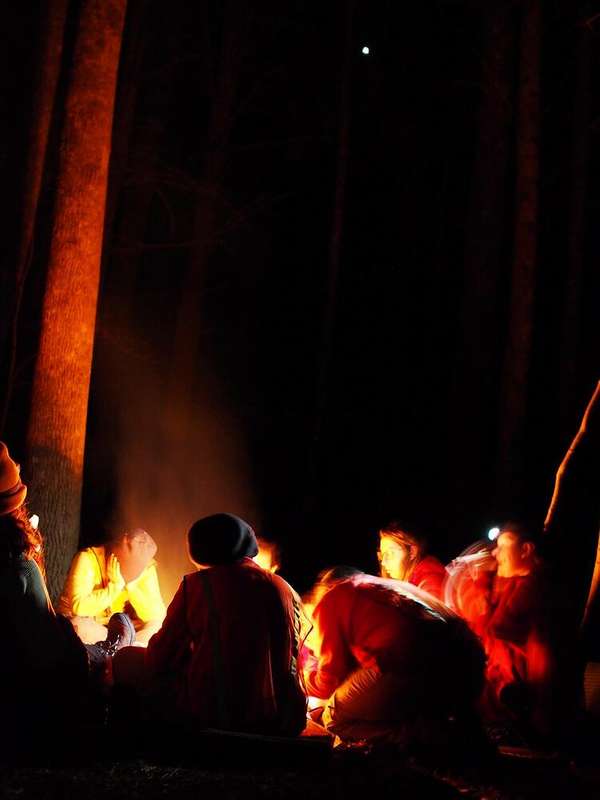The Brilliance of a Circle and Nature: Working with Group Dynamics in the Wilderness. A group of people sitting in a circle in the wilderness is an image we can all imagine, have seen, and/or been a part of. It’s a powerful image. Why is this such a powerful image? It is something that has been going on for centuries. There is inherent wisdom, not only in the act of sitting in a circle and being a part of a group but also in what the magical element of the wilderness provides to this already rich experience.
I sat in a circle throughout most of my graduate program. To those that know that I attended Naropa University for my Master’s in Contemplative Psychotherapy, this is not a surprise. Our training essentially involved consistent group work for three years with the same individuals. I often describe this experience as The Wisdom of No Escape. This is also the title of one of Pema Chodron’s books. There is something significant I experienced about having to face what came up for me without an easy escape. Because of my being a part of a group and working together with this group, my patterns, tendencies, and desires came alive. I, therefore, had to look at it all. (I didn’t have to, but I chose to because I wanted to learn.) Something similar comes up for our students in the wilderness. They don’t have to look at themselves, but being in the wilderness, it becomes hard not to see and experience their raw sense of self. The group is a mirror for this. And the wilderness provides a mirror for this. The consistency provides the intensity and opportunity to re-pattern. The instructors and therapist provide the guidance, support, and path to relating to this wisdom—the innate goodness, the information, the patterns. Ultimately, that is what it is. There is true wisdom in being in a situation where one cannot “hide” anymore from themselves. Their true selves are revealed through the magnificence of the wilderness, their interpersonal relationships, and the group dynamic. It is our job as professionals and programs to create a soft place for these students to land. Then the brilliance of what occurs in groups can begin.
What I believe is unique to Blue Ridge Therapeutic Wilderness are the mountains that serve as our foundation and platform are massively beautiful, old, nurturing mountains. These mountains and our field area exude a soft healing space that seems to envelop our students. The Blue Ridge Mountains are the soft places students get to land. And from this, an even richer group experience gets to come alive.



